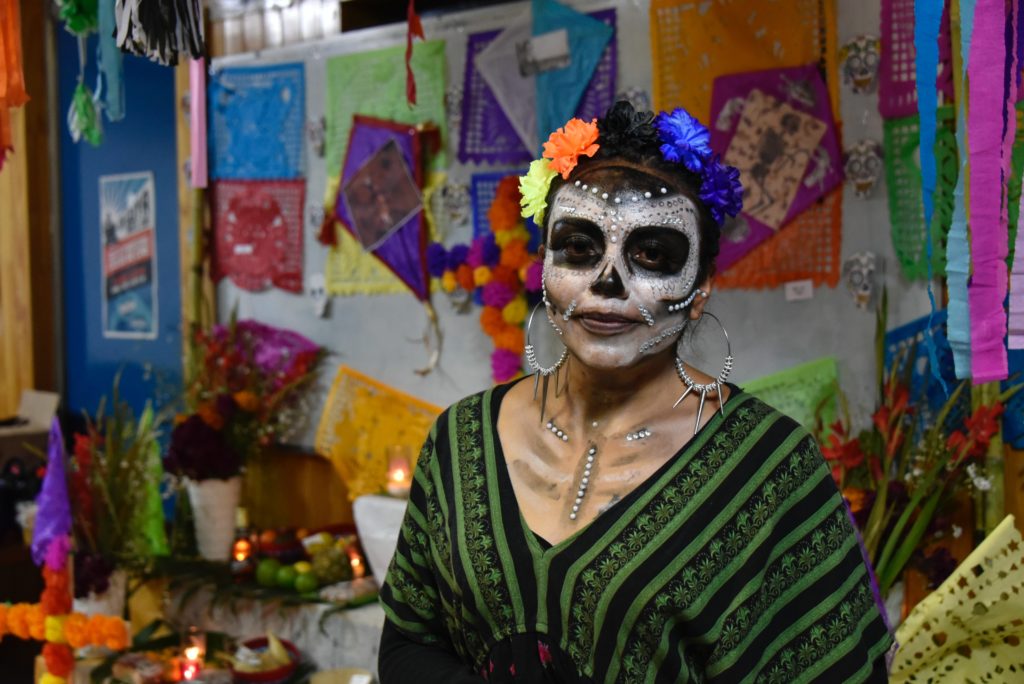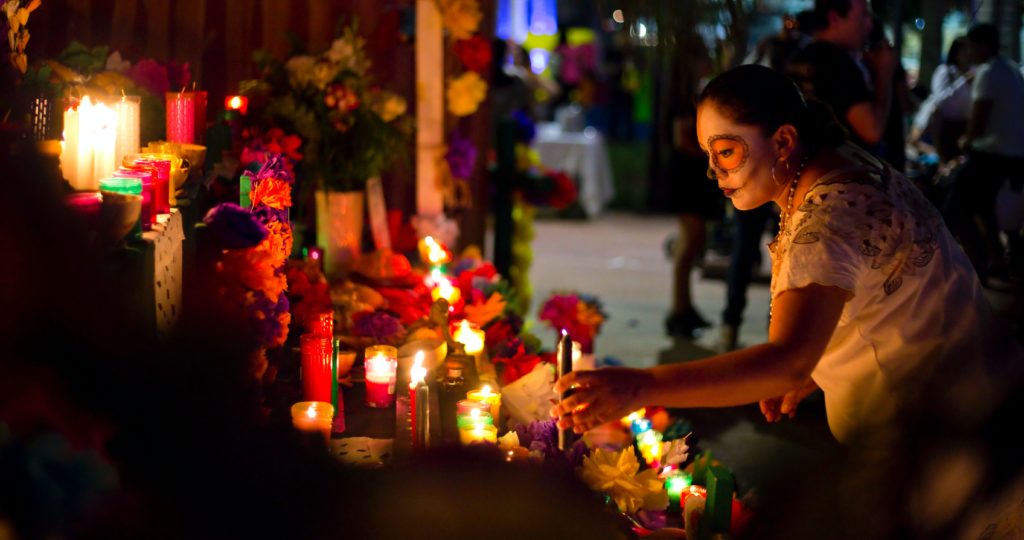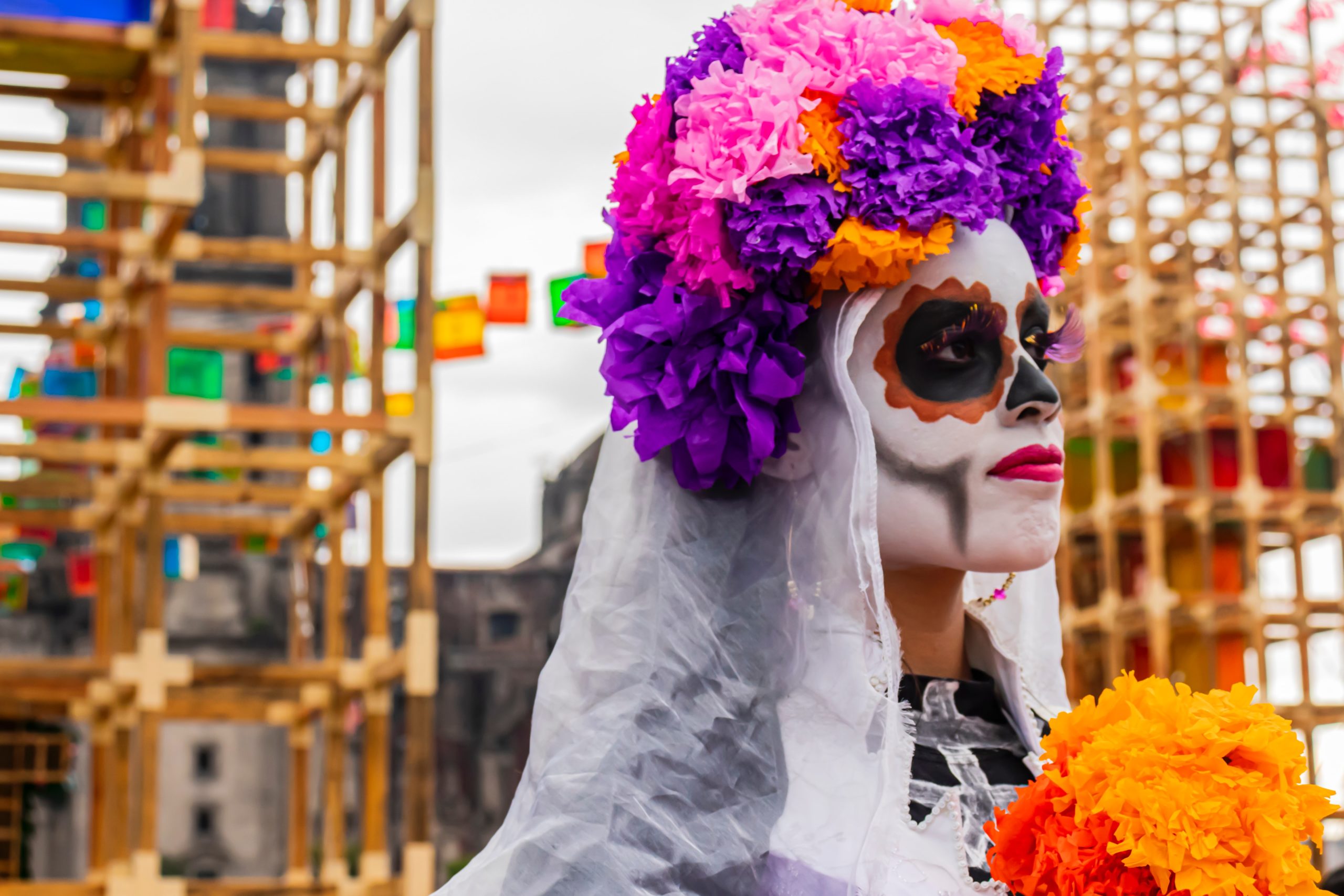Día De Los Muertos, known as Day Of The Dead in English, is celebrated in Latin America from Oct. 31 through Nov. 2. There is often a myth that Hispanics or Latinos are religious and celebrate Día De Los Muertos, but this is not a holiday. It is a tradition, and not all those who are religious celebrate this.
All families celebrate it differently, but the concept remains the same: Día De Los Muertos is for people to welcome their loved ones’ souls back for a few days.
Dia De Los Muertos has been around for over 3,000 years. This used to be celebrated in the month of August but was later moved to October to correlate with the Spanish holiday called All Saints’ Day and All Souls’ Day.
The Aztecs, along with other indigenous people, celebrated the dead with rituals that included dancing. Dia De Los Muertos has been celebrated in the United States more recently and spoken about than it has been in the past. States like Arizona even have events for the celebration that are held for the public. These celebrations usually consist of festivals with dancing and attire to look like skeletons.

During the pre-Columbian era, the Aztecs would dance but were not as colorful attire like they are today. Dia De Los Muertos has blended traditions that the Aztecs and Spanish combined. Today, families celebrate how they are able to from their home.
Yesenia Alcala is a Mexican woman who moved to the United States in the early 2000s. Alcala is in her first year at Sinclair and is in the paralegal program. Although she is already working as a paralegal in an office, she is hoping to get more knowledge with her studies.
“I feel that I am learning more and hands-on. It’s exciting,” said Alcala about the program.
This is the first year that she will be celebrating Día De Los Muertos with her two young children who are five and six years old.
“This is one part of my heritage and culture that I want my children to embrace and continue,” said Alcala.
To celebrate the souls of the deceased loved ones, Yesenia sets up her ofrenda, or altar, in the corner of her living room. Traditionally, families adorn their altar with pictures of the deceased. Likewise, they place different foods and objects on the altar that represents their loved ones so they can enjoy their time at home.

Alcala uses battery candles because it is safer for the kids at home. On her altar, she places sugar and chocolate skulls.
“We put toys out for the kids. On chocolate skulls, we write our names on them and on the sugar skulls their names” said Alcala.
For beverages, they place alcohol and liquor. This is a ritual to bring the spirits here by making a cross made of salt. By Nov. 2, the spirits go until next year when removing everything from the altar.
While growing up. for Alcala, Día De Los Muertos had different meanings on her mother’s side and father’s side of the family. For her father, it is seen as worshiping the devil because they were having the souls come to join them. For her mother’s side, she explained that it was seen as “welcoming our ancestors and that we’re celebrating their life.” Her family believed that souls are spending time with them.
In Mexico, Alcala would celebrate Día De Los Muertos by going to the cemetery and staying for some time. She mentioned that every time they would gather at the cemetery and talk about their loved ones, there were new stories being talked about.
Alcala told an interesting story about Dia De Los Muertos. Two years before she came back to the United States, her uncle passed away four months before the celebration of Día De Los Muertos. Her father placed a voice audio recorder by the altar, and the next morning, they noticed the water had shrunk. As well, the placed food looked different, diminished. That morning, as they replayed the audio, they heard steps close by.
In 2017, the Disney movie “Coco” was released. The film contains a representation of those souls who have crossed to the other side.
Alcala discusses how she and her children went to see the movie when it came out in theaters.
She believes that the dead should be talked about more. When discussing the meaning of Dia De Los Muertos, she tells her children, “We’re going to see each other again.”
Her children are excited to celebrate the souls of their loved ones this year.
This tradition, as mentioned before, is not a holiday but something that should be discussed more in the United States so it is not confused for something that it is not. Many people confuse Dia De Los Muertos with Halloween, and Yesenia said,
“I wish we could bring more attention [to Dia De Los Muertos] and for people to learn the meaning behind it [or] to at least acknowledge it.”
The celebration for the deceased is celebrated in many ways, but Dia De Los Muertos is how Latin America spends these days to enjoy having souls back into their life.

Jennifer Tellez
Reporter


